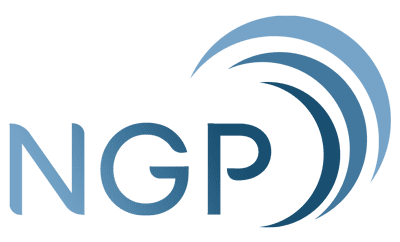While many people are familiar with digital marketing, not everyone understands the fundamentals. Knowing the different parts of digital marketing can help you develop a better marketing strategy to fuel your business’ success.
Let’s dive into how we can take your business there!
Digital Marketing in the Philippines
True Logic’s 2022 Philippine Digital Marketing Report says there are 156.5 million mobile connections this year. About 51% of that web traffic came from mobile devices. The report also noted that Filipinos spend an average of 5 hours and 47 minutes online on their phones each day. This is much longer than the global average of 3 hours and 43 minutes for mobile internet users!
So it’s no surprise that advertisements and marketing strategies saturate the web. How can your business, then, get a slice of this pie? You need to know which areas of digital marketing to explore and where to build your expertise.
Areas of Digital Marketing
In either B2B or B2C, knowledge of digital marketing can guide you to the right campaign for your business goals. Consider exploring the following areas:
1. Affiliate Marketing
Also known as influencer marketing, affiliate marketing includes content creators, influencers, and brand ambassadors in its scope. These creators promote your products or services for a fee. It is cheap, broad-reaching, and flexible to changing trends. The Performance Marketing Association says that about 81% of brands use affiliate marketing.
Affiliate marketing operates in distinct ways within B2B and B2C contexts.
In B2B, affiliate marketing means partnering with industry experts. They refer businesses to relevant products or services. Affiliates create content for decision-makers, like whitepapers and webinars, highlighting solutions to specific business challenges. Due to longer B2B sales cycles, affiliates must nurture leads by providing valuable resources over time.
In B2C, meanwhile, businesses partner with affiliates who are often influencers or bloggers. The affiliates promote products for a commission on sales. These affiliates create engaging content like reviews and social media posts to drive traffic to the brand’s website. Each affiliate gets a unique tracking link. This way, businesses are able to track sales and calculate commissions based on performance.
2. Content Marketing
Content marketing is a strategy involving creating and sharing valuable, relevant content. The goal is to attract and engage a specific audience and prompt potential customers to act. This could mean joining a campaign, adding items to their cart, or purchasing.
This strategy aims to build lasting, trusting relationships with customers and drive repeat sales. Content marketing works well in B2C contexts. It focuses on engagement, storytelling, and emotional connections. By aligning content strategies with these elements, brands can connect better with their audience.
Content marketing can take various forms, including:
- Blog posts
- Press releases
- Videos
- Infographics
- Podcasts
- Social media posts
Moreover, content marketing works in harmony with other digital marketing strategies, such as SEO. Brands often collaborate with affiliates to share content on social media. This expands their reach to a wider audience. By using these elements, businesses can improve their marketing and connect more with consumers.
3. Email Marketing
Email marketing is still very effective, despite the rise of affiliate and content marketing. It can complement, instead of compete with, a content marketing strategy by integrating seamlessly into the action plan.
Here are some ways to integrate email marketing into your campaigns:
- Newsletters
- Promotional Emails
- Transactional Emails
- Drip Campaigns
Personalization is key in email marketing. Tailor content to individual preferences to boost engagement. Focus on building relationships instead of just selling!
In a B2B setting, email marketing strategies can help provide valuable information to decision-makers in organizations. Businesses create targeted email lists by factors like industry and job role for personalized messaging.
Conversely, B2C email marketing prioritizes engaging individual consumers and driving immediate sales. Brands build large email lists through various channels, such as website sign-ups and social media, and attempt sales through these newsletters.
4. Search Engine Optimization (SEO)
SEO is the process of optimizing a website to improve its visibility in search engine results pages (SERPs). The primary goal of SEO is to increase organic (non-paid) traffic, making it easier for potential customers to find the site.
B2B SEO focuses on optimizing a business’s online presence to attract other businesses as customers. The process involves several key strategies tailored to the unique needs of the B2B market.
First, B2B companies find keywords that potential partners might use to search for their products or services. It often includes terms and long-tail keywords specific to the industry. They reflect the needs and pain points of decision-makers. B2B businesses can improve their search engine visibility. They should use these keywords to optimize website content. This includes landing pages, blogs, and case studies. The same goes for B2C markets.
5. Social Media Marketing
Social media marketing is the strategic use of platforms like Facebook and TikTok to promote products, services, or brands. It encompasses a range of activities designed to connect with an audience, build brand awareness, and drive engagement.
It is a dynamic and multifaceted approach to reaching potential customers and engaging with existing ones. By setting clear goals, knowing their audience, and creating great content, businesses can use social media to achieve their marketing goals. They must also analyze their performance.
B2B social media marketing aims to build professional ties and establish thought leadership. Businesses often use LinkedIn and Twitter to connect with decision-makers and influencers.
B2C social media marketing aims to engage individual consumers and build brand loyalty. Content is now more visual, creative, and interactive. Make sure to include promotions, product showcases, testimonials, and lifestyle content that connect with consumers when marketing B2C.
6. Digital Public Relations
Digital Public Relations (PR) has changed how organizations communicate. With online platforms and digital tools, this kind of PR also aims to build and maintain a brand’s digital reputation by engaging with audiences on social media, blogs, and other online channels.
Choosing the right digital PR agency is key to your marketing goals. A suitable agency can enhance your online identity and ensure your brand stands out. According to the Digital Marketing Institute, the benefits of effective digital PR carried out by a capable agency include:
- Boosting website traffic
- Improving SEO
- Generating earned links
- Generating leads and sales
- Enhancing brand image and building trust and confidence
- Implementing cost-effective campaigns
- Easily tracking success
Whether marketing B2B or B2C, it is clear that a strong digital PR strategy can boost your brand and meet your marketing goals.
If you need an agency to help you navigate all these focus areas and meet your marketing goals, contact NGP IMC today. We’re experts in Connecting Your Story to make a lasting impact.

Amy Ruth Valenzuela is a graduate of Far Eastern University, where she earned a Bachelor of Arts in Communication. With a strong passion for communications and media relations, Ruth has developed a diverse skill set that includes journalism, scriptwriting, events and production management, risk management, social media marketing, and layout and graphic design. Her experience in these areas has shaped her approach to storytelling and content creation, driving a commitment to excellence in every project. Ruth is dedicated to leveraging her expertise to create impactful narratives and foster meaningful connections in the industry.



Leave a Reply